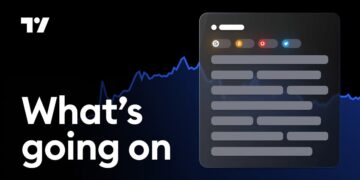Ethereum didn’t become a top-three project overnight. In its early phase, it was still experimental — affordable, misunderstood, but fundamentally strong. Its capped presale, functional smart contract platform, and developer activity attracted people who knew what they were looking at.
Today, some analysts say Bitcoin Solaris is tracking a similar path. It offers a hard-capped supply like Bitcoin, high-speed scalability through its dual-layer architecture, and broad accessibility through tools like mobile mining and no-lock staking. It’s not trying to imitate Ethereum. But in terms of opportunity, utility, and early-stage positioning — it’s drawing familiar signals.
Capped Supply, Real Participation
Ethereum’s total supply was uncapped from the start, with inflation tied to network activity and validator incentives. Bitcoin Solaris takes a stricter approach, echoing Bitcoin’s original scarcity principle: 21 million BTC-S tokens, fixed forever.
That alone positions BTC-S as a deflationary asset in an ecosystem built for utility. The current presale offers 4.2 million tokens (20%) at a flat price of 1 USDT per token, giving early buyers the same transparent deal across the board.
Unlike early Ethereum, where holding ETH didn’t offer much outside speculation, Bitcoin Solaris gives buyers ways to earn, use, and grow their position immediately — without waiting for dApps to catch up.
Staking Without Lockups
Ethereum introduced staking through ETH 2.0, but it came with trade-offs: validator requirements, lock-up periods, and technical knowledge. Bitcoin Solaris avoids those issues through a no-lock liquid staking model built into its Delegated Proof-of-Stake (DPoS) Solaris Layer.
Users stake BTC-S and receive sBTC-S tokens in return — liquid representations of their position that can be unstaked at any time. No penalties, no timeouts, and full access to earned rewards. That structure increases user participation while reducing centralization risk—both of which Ethereum struggled with in its early validator model.
Scalability Is Already Solved
One of Ethereum’s biggest bottlenecks came as adoption picked up. The network hit congestion, gas fees spiked, and user experience dropped. Ethereum has since patched scalability through rollups and L2s — but it took years.
Bitcoin Solaris addresses that issue at launch. The dual-layer architecture combines Proof-of-Work security at the base level with a DPoS-driven Solaris Layer that handles 10,000 transactions per second. That means fast, low-cost transfers, staking, mining, and wallet activity — without waiting for future upgrades. It’s a smart structure that supports real usage now, not later.
Mining for the Masses
Ethereum phased out mining entirely after The Merge, removing a key way for small users to earn. Bitcoin Solaris revives that model through the Solaris Nova App, allowing anyone with a smartphone to mine BTC-S with a single tap.
It’s one of the most accessible mining systems today — and a major reason why the userbase is growing daily. For a breakdown of the Nova App, check out Crypto Nitro’s recent feature.
Security and Transparency
Bitcoin Solaris launched with full third-party auditing and open infrastructure:
Nothing hidden. All contract logic, staking pools, reward mechanics, and token flows are verifiable directly on-chain.
The Window for Early Movers Is Open
Bitcoin Solaris isn’t selling promises or vague potential. It’s built around fixed supply, growing utility, and clear entry terms.
Phase 1 of the Bitcoin Solaris presale sold out, and Phase 2 is now live — with tokens priced at 2 USDT. Total presale supply remains capped at 4.2 million BTC-S, and availability is running down. There are no hidden rounds or late-stage discounts. Once this phase closes, it’s market pricing from here on out.
How to Join Bitcoin Solaris Presale
1 — Visit bitcoinsolaris.com
This is the official presale portal and hub for all project utilities, mining tools, and real-time updates. Always verify you’re on the official domain before connecting your wallet.
2 — Connect a Solana-Compatible Wallet
Use wallets like Phantom or Solflare, which are fast to set up and fully supported.
3 — Purchase BTC-S at 2 USDT per Token
The presale offers a fixed rate. Choose your amount, confirm the transaction, and receive BTC-S directly into your connected wallet.
4 — Follow Community Channels
Get updates and connect with other early participants via Telegram and X
Ethereum’s early growth was about building something new. Bitcoin Solaris is growing by making crypto usable — for miners, stakers, and mobile-first users.
That’s why comparisons are happening. Same structural strength. Same early-phase affordability. Same opportunity — before it scales.
Website: https://bitcoinsolaris.com/
X: https://x.com/BitcoinSolaris
Telegram:



















